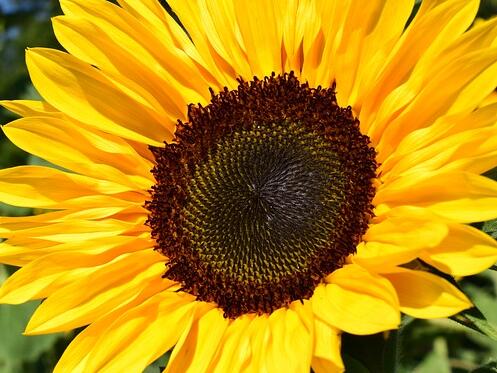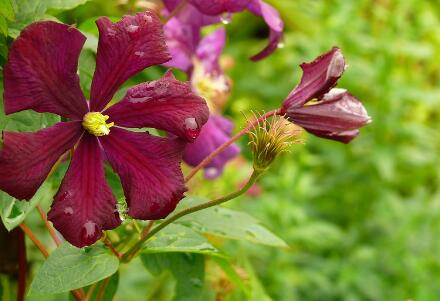Matters needing attention in planting Bletilla striata
The demand for planting Bletilla striata is very high in recent years, because someone has made money by planting Bletilla striata, so it has attracted a lot of admiring growers. But you can grow it if you don't want to, and it doesn't necessarily make money. The growth cycle of Bletilla striata is usually four years, and if it is not planted properly, the yield and quality of Bletilla striata is not high, then the loss is very heavy. So today, the editor has brought you a few notes on planting Bletilla striata, hoping to help you.

1. Soil
Bletilla striata has certain requirements on the planting soil, the content of humus and organic matter in the soil is better rich, followed by a high degree of soil looseness, otherwise it has a great impact on the growth of Bletilla striata tubers. This means that soils such as sand and heavy clay are not suitable for planting Bletilla striata. The planting land of Bletilla striata is generally sandy loam, the planting land is close to the water source, and the drainage, moisture and fertilizer retention of the soil should be good. Of course, if the soil conditions are not up to standard, we can add sand to the soil to enhance soil permeability.
2. Temperature
The relationship between the survival rate of Bletilla striata and temperature is relatively large. If the day and night temperature of the planting site is too high, or the temperature of the planting ground is too high, or the temperature is too low in a certain season, we need to manage it by manual temperature control, otherwise it will reduce the survival rate of Bletilla striata, resulting in a reduction in Bletilla striata production. In general, Bletilla striata can grow normally in an environment of 6 to 30 degrees, but the most suitable temperature for the growth of Bletilla striata is 20 to 25 degrees. When the temperature is below 5 degrees, the leaves of Bletilla striata will turn yellow and wilt, so we should strictly manage the temperature of the planting area.
3. Humidity
Bletilla striata likes to grow in a humid environment, so we should keep watering in the planting process to keep the soil moist. But it should be noted that the phenomenon of stagnant water can not occur in the field, of course, in case of cloudy and rainy weather or continuous rain, drainage treatment should be done in time, so as not to affect the growth of Bletilla striata. It should also be noted that watering can not wait until the soil is dry, usually when the soil is still slightly moist, otherwise it will also have an impact on the growth of Bletilla striata.
4. Lighting
Bletilla striata has the characteristics of tolerance to shade and fear of strong light. Then this is to remind us that when planting Bletilla striata, we should do a good shade treatment to avoid direct sunlight and hurt Bletilla striata. For light management, we either choose to plant Bletilla striata under natural shading conditions to ensure that there is a certain amount of scattered light in the field. Secondly, it can also be manually built scaffolding, shading, but also to maintain a certain amount of light, can not be no light conditions.
The above points must be paid attention to when planting Bletilla striata, and of course, its pest control, fertilization, weeding, soil cultivation and so on, which also need to be paid attention to. As the editor's energy is limited, I will not explain it to you one by one here. If you need it, you can leave us a message.
- Prev

How much is the price of sunflower seeds per jin? How long does it take to sprout? Why do you follow the sun?
Sunflower, also known as Chaoyang Flower, gets its name because its flowers often face the sun. Sunflower seeds called sunflower seeds, often fried as a snack to eat, delicious, can also extract sunflower seed oil for consumption. So, how much is the price of sunflower seeds per jin? How long does it take to sprout? Why do you follow the sun? It is understood that
- Next

When is the season of transplanting Liana Flower Queen Clematis? How many years can you live by planting? How many times a year do you bloom?
Liana flower queen clematis alias peony, passionflower, gold package silver, mountain Aristolochia mandshurica, passionflower, Weilingxian, more common in garden cultivation, has a certain ornamental value. Its florescence is usually from June to September and has a certain fragrance. The root of Clematis can also be used as medicine.
Related
- Fuxing push coffee new agricultural production and marketing class: lack of small-scale processing plants
- Jujube rice field leisure farm deep ploughing Yilan for five years to create a space for organic food and play
- Nongyu Farm-A trial of organic papaya for brave women with advanced technology
- Four points for attention in the prevention and control of diseases and insect pests of edible fungi
- How to add nutrient solution to Edible Fungi
- Is there any good way to control edible fungus mites?
- Open Inoculation Technology of Edible Fungi
- Is there any clever way to use fertilizer for edible fungus in winter?
- What agents are used to kill the pathogens of edible fungi in the mushroom shed?
- Rapid drying of Edible Fungi

